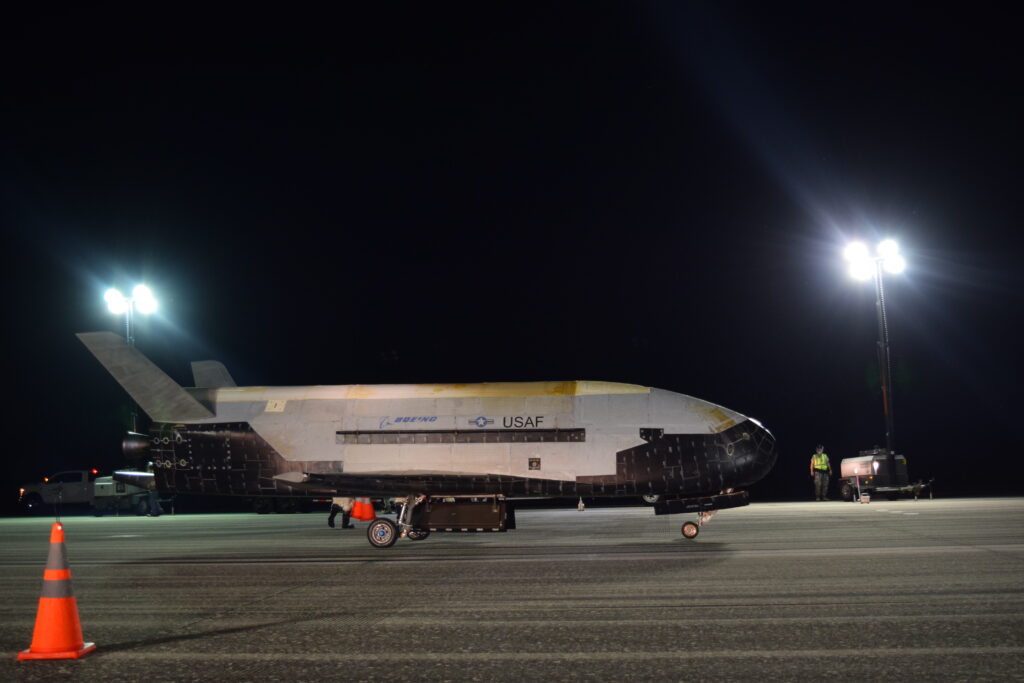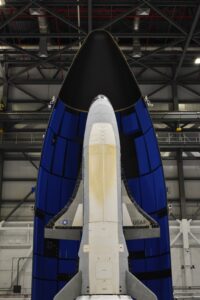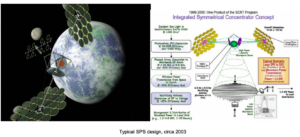
X-37B space plane
WASHINGTON: As a first step in a broad plan to begin declassifying information about US military space capabilities, Air Force Secretary Barbara Barrett today released new details on the X-37B military space plane. She also released the launch date, which had usually been secret.
The mission, she told a webinar hosted by the Space Foundation, “maximizes the X-37B’s unique capabilities” and “host more experiments than any prior X-37B flight.”
It will involve three sets of experiments, she explained, including a demonstration to test the capability of converting solar power into radio-frequency microwave radiation, which in turn can be beamed to Earth and converted to electrical power. The Naval Research Laboratory is responsible for the experiment, she said.
DoD has a history of on-again, off-again interest in space-based solar power as an unlimited energy source since the early 2000s. The now-defunct National Security Space Office commissioned a landmark 2007 feasibility study recommended a coordinated, government-wide program to pursue the capability.
That study “concluded that space‐based solar power does present a strategic opportunity that could significantly advance US and partner security, capability, and freedom of action and merits significant further attention on the part of both the US Government and the private sector.”
Interest in the issue waned — largely due to the high capital costs involved, and the fact that no single US government agency has an official remit to pursue research and development. However, the US military now has been prodded to re-look the issue by China’s announcement in last May of it’s ambitious plans for deploying a space-based solar power station, also using microwave transmission.
The experimental X-37B, built by Boeing, long has been the locus of public speculation — and concern from China and Russia, as well as some US allies — regarding its possible role as a space-based weapon. DoD, the Air Force and now the Space Force insist that the autonomous, reusable spacecraft, which resembles a mini-Space Shuttle, is simply an experimental craft.
“The ability to test new systems in space and return them to Earth is unique to the X-37B program and enables the U.S. to more efficiently and effectively develop space capabilities necessary to maintain superiority in the space domain,” according to a Space Force press release today.
During its last mission, which ended this past October, the X-37B spent 780 days on orbit, “extending the total number of days spent on orbit for the spacecraft to 2,865 — or seven years and 10 months,” the press release said. That is a very long time in space.
The upcoming mission will be the first time the X-37B will use a service module, attached to the back of the craft to carry additional payloads, to host experiments.

The Boeing-built X-37B is vertically launched using a rocket.
“This sixth mission is a big step for the X-37B program,” said Randy Walden, director and program executive officer for the Air Force Rapid Capabilities Office. “The incorporation of a service module on this mission enables us to continue to expand the capabilities of the spacecraft and host more experiments than any of the previous missions.”
Besides the solar-power demo, the mission will deploy the FalconSat-8, a small satellite developed by the Air Force Academy and sponsored by the Air Force Research Laboratory carrying five educational experiments.
In addition, as Barrett elaborated, two NASA experiments will study the “reaction of select, significant materials to conditions in space, and the effects of “ambient space radiation on seeds.”
Barrett, in tandem with Gen. Jay Raymond, who is double-hatted as the head of US Space Force and of Space Command, used the Space Foundation webinar to also release the Space Force’s first official recruitment video.
During the webinar, Barrett and Raymond fielded a wide range of general questions, including from renown physicist and author Neil deGrasse Tyson about the role of Space Force in defending space assets from natural threats such as space weather and on-orbit debris — to which Raymond responded by noting Space Command’s current space monitoring and tracking capabilities, via the Space Surveillance Network of radar and optical telescopes.
Asked about why the Space Force is needed at this time, Barrett pointed to technology developments by Russia and China that the US military sees as threatening.
“I’d say it’s none too soon,” she said. “I mean, think about the things that Gen. Raymond just spoke of that have to do with aggressive and warlike actions, threatening actions, by space competitors, it’s important for us to have an entity that is focused entirely on space defense, and space capability. So, it is if anything overdue for us to add a Space Force.”
(In his opening remarks, Raymond reiterated his long-standing concern about Russian space activities aimed at building its counterspace capabilities, including maneuvering satellites and testing of ground-based antisatellite weapon. He also mentioned Iran’s launch last month of a military-developed satellite — despite the fact that he had dismissed the satellite as a threat in an April 25 tweet as “a tumbling webcam.”)
Somewhat ironically, the release of the recruiting video comes only two days after the release by Netflix of a trailer for its new “Space Force” comedy, starring Steve Carrell.
When — inevitably — asked what advice Raymond might give the actor about his new role as the Space Force chief, Raymond offered only this: “get a haircut. He’s looking a little too shaggy.”
Air Force awards SNC $13B contract for new ‘Doomsday’ plane
The win is a major victory for the firm in a competition that saw the surprise elimination of aerospace giant Boeing.



























